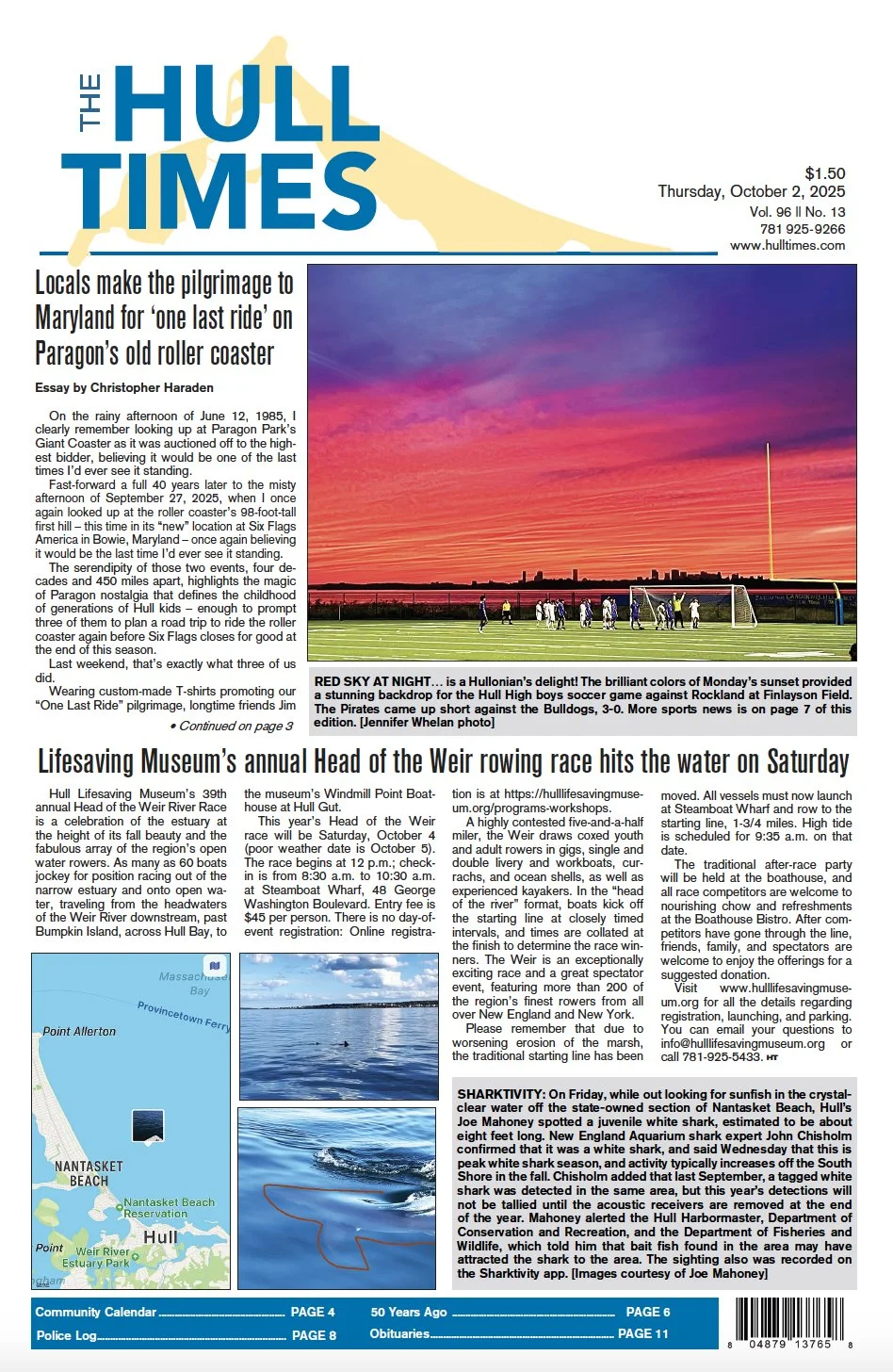Candy Perry, born in Washington, D.C., now a Florida resident, reached out to the Hull Historical Society with an information request. Did anybody in town know the name of Henry Oliver Peabody, a man who lived in Hull, ever so briefly, at the beginning of the 19th century?
The quick answer was that yes, he had appeared in The Hull Beacon on three occasions:
“June 5, 1903: Henry O. Peabody, the inventor of famous breech loading rifle, with his sister, will summer with his niece Miss H. M. Sawyer at Allerton, Winthrop Avenue.
“July 3, 1903: Henry O. Peabody died suddenly Monday morning at his summer home at Allerton of apoplexy. He was aged about 77 years. Mr. Peabody was the inventor of a rifle. At the opening of the Civil War, Mr. Peabody was at work in a gun factory in Springfield. He gave up his position at that time and devoted himself to perfecting an improvement in the gun then best known. A company was formed and the new rifle was sold to the Turkish government. As a result of his success Mr. Peabody made about $1,000,000. He was unmarried, and his Boston home for many years was at 35 Pinckney St.
“Oct. 23, 1903: Mr. Peabody, the inventor of the Peabody gun, that is having his will contested, has lived on Allerton Hill some years. Both Mrs. Hennian and Mr. Sawyer have each in turn kept his house and yet he did not seem to care for either, according to his will.”
Beyond that information, there was not much more to know about Peabody’s life in Hull. Although online sources say that he was born in town, that was not the case; he was born in Boxford. According to the Plymouth County Registry of Deeds, he purchased Kenton Avenue Lots 145-146 from William B. Mitchell on Jan. 23, 1902. There was an existing house on the lot in 1895, but there is evidence that a new house was built on the lot in 1900, two years before Peabody bought the land.
Witnesses to the sale of the property to Peabody were William and Anne Litchfield. Dr. Litchfield owned the lots on the 1895 map of the town. A later owner expanded the house, but vestiges of the house that Peabody summered in – ever so briefly – still remain encased on the enlarged home. Today the address is 25 Winthrop Ave. In Peabody’s time, according to the Registry of Deeds, the house was technically on Kenton Avenue.
That was enough for Candy. She and her husband, Randy, booked a trip to Hull, and Plymouth, as she decided to explore her Mayflower ancestry at the same time. And Boston. Henry owned two homes there, too.
They arrived in Hull on Oct. 18 and the Hull Historical Society treated them to a tour, starting at the Hull Public Library and heading for 25 Winthrop Ave. Candy’s question was “Why Hull?” That answer was simple. In 1902, Hull was the place to be for Boston businessmen in summer, a sunny, breezy, smog-free escape from the city, reachable by both steamboats and trains. The home Peabody purchased, near the top of Allerton Hill, had a tremendous view of everything from Hull Bay around to Boston Light.
Candy was content to take pictures, but Randy wanted to knock on the door. After all, they had traveled all that way, he said, “now or never.” The owner, David Kazemi, answered, confused at first, but was pleased to learn about the past owner of the house who, aside from his rifle also invented some ice skates and a “honey extractor.” David, himself, had only owned the home for a year and a half. “What attracted you to it?” Candy asked.
“The view,” David said, without hesitation. The unexpected host welcomed Candy and Randy into the home for a tour.
Two more stops awaited. At the base of Allerton Hill, near the northeastern corner, is a memorial stone and marker commemorating the Pilgrims’ arrival to the Boston Harbor area in the fall of 1621. With Candy’s five separate lines of Mayflower ancestry and relationships to eight different Pilgrims, it only made sense to stop. Then, it was onto Fort Revere.





















